Diary Entry
We spontaneously visit Uli’s friends in Vladikavkaz in southern Russia. The morning after our arrival, Alan picks us up in his car and takes us to his apartment. There, Angela, Tamilan and Aleksandra are waiting for us with a sumptuous breakfast of tomatoes, cucumbers, cheese, pancakes, bread, butter and dates. It was the weekend and Alan, Tamilan and Aleksandra want to drive with us to the mountains and show us the Caucasus.
On the way, Alan points in a direction and explains that a few years ago, in the nearby town of Beslan, a terrorist attack on a school claimed many lives.
The regions of Chechnya and Ingushetia are also nearby. Although things are currently quiet there, the bloody conflicts between the Muslim minority and government troops are not long ago.

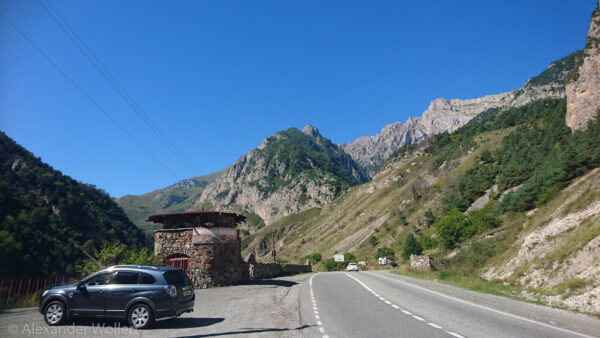
Travel warning!
“North Caucasus:
Dagestan, Ingushetia, North Ossetia and Chechnya: The personal safety of foreign travelers in these regions cannot be guaranteed by either the central authorities of the Russian Federation or the local security authorities. The authorities’ options for intervention are also very limited in cases of domestic violence (e.g. child abduction by a parent, forced marriage or forced admission to a psychiatric clinic). The risk of kidnapping for ransom also exists for foreigners – as does the risk of becoming involved in terrorist attacks or uprisings by militant groups. For example, one person was killed and eleven injured in an attack in the old town of Derbent in Dagestan on December 30, 2015.Travel to the republics of Dagestan, Ingushetia, North Ossetia and Chechnya is not recommended.”
Auswärtiges Amt, as of 2017







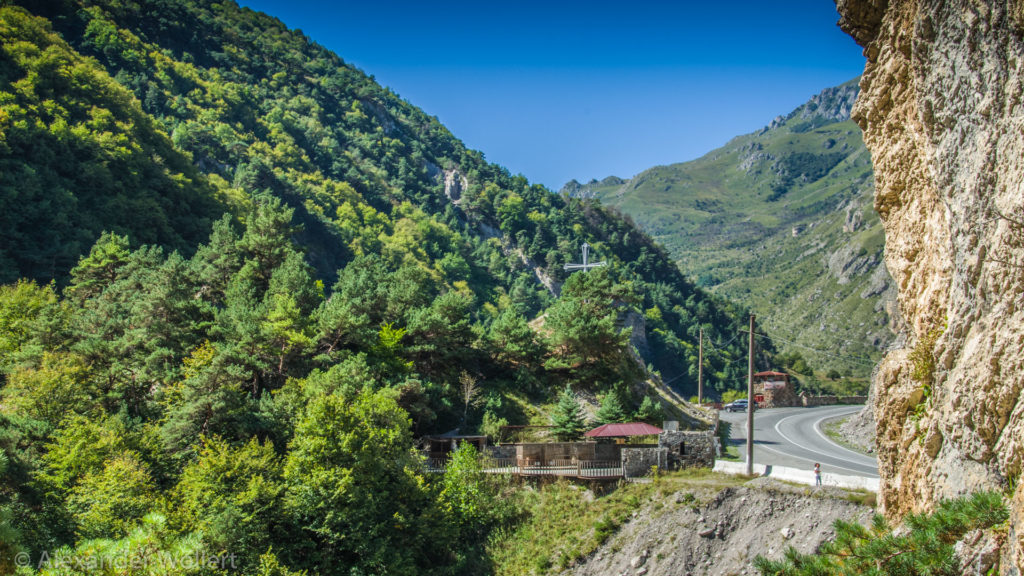
The weather is glorious. There is hardly a cloud in the sky and we can finally leave our warm clothes in our luggage. Alan stops his large SUV at the side of a mountain road so that we can fill up with water from a natural spring.
Not far from there is a fantastic gorge, in the depths of which a stream eats its way further into the mountain.

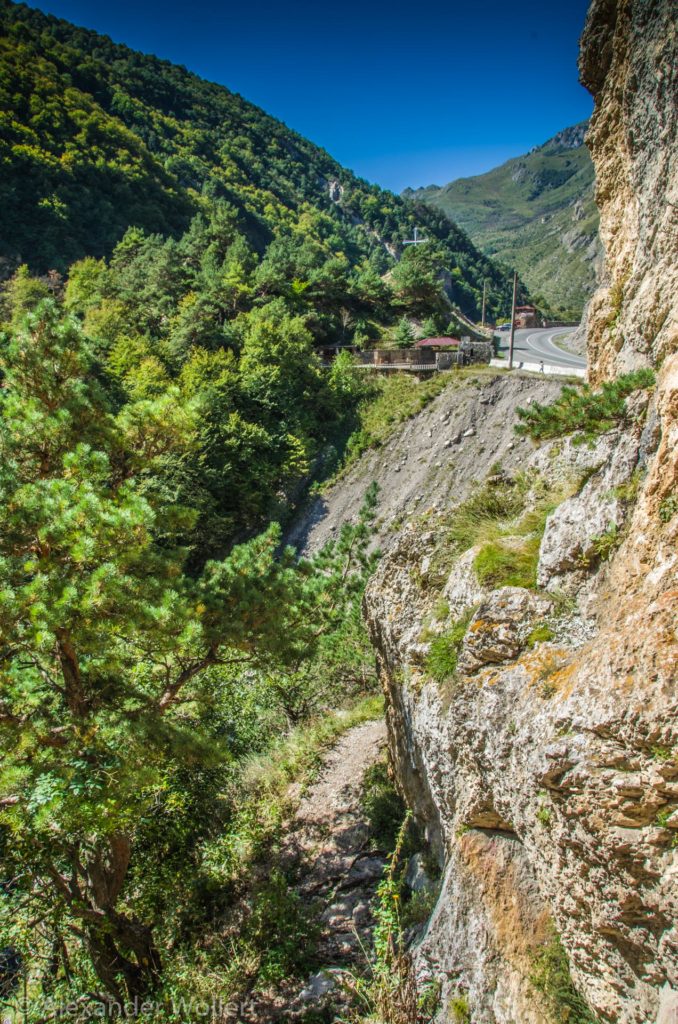

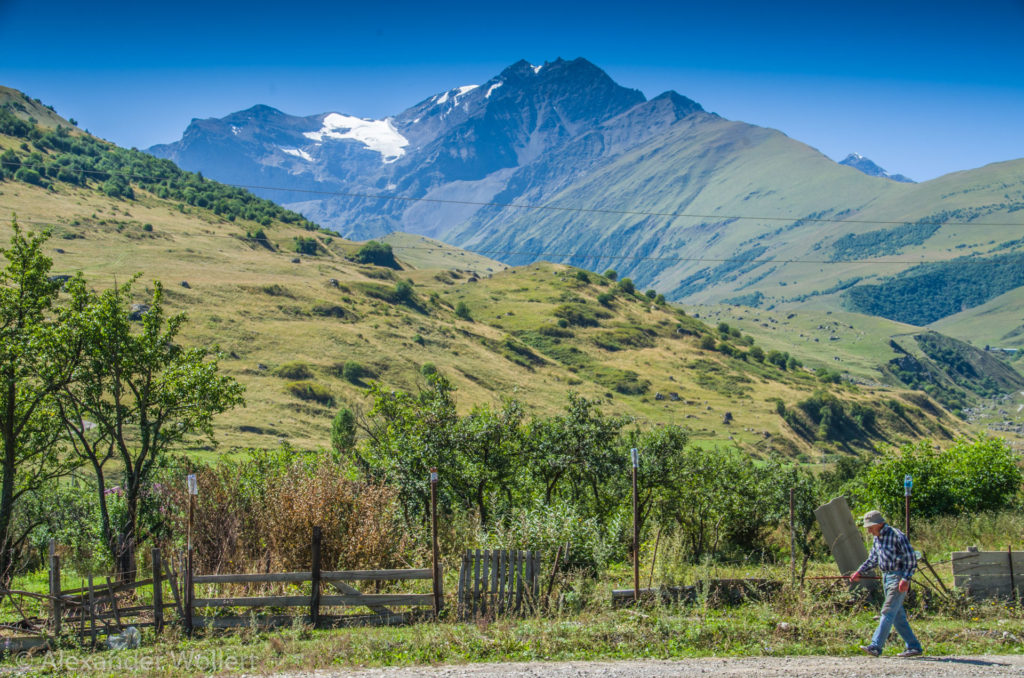
Beehives are stacked on large trailers at the side of the road. They are obviously constantly being moved, which means the bees have a lot of variety in their diet and nature can enjoy the pollinating visitors in new places.
Here, in the city and in the mountains, we don’t see any garbage. They really are very clean, these Russians.

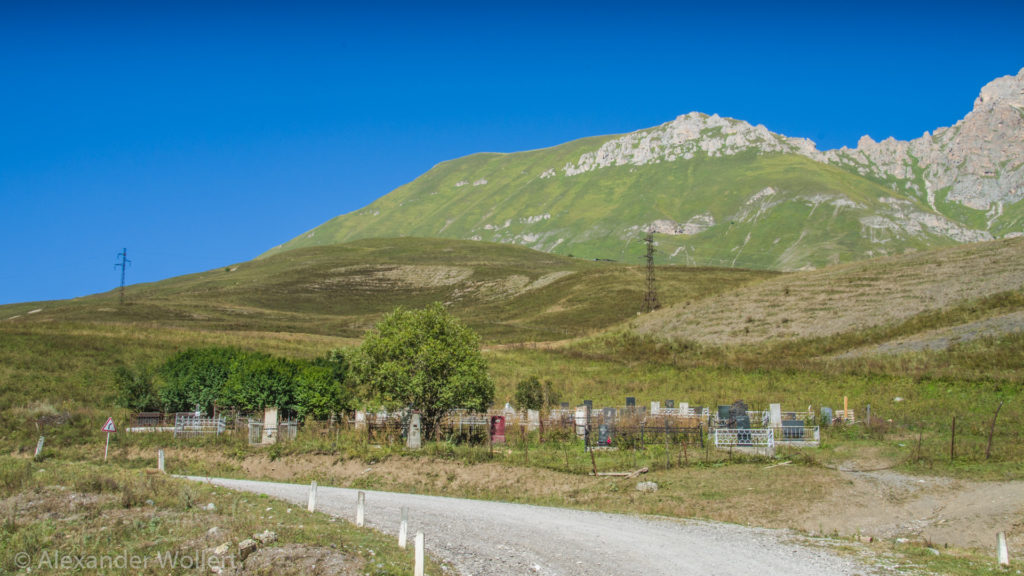

Defense towers – trademark of the Caucasus
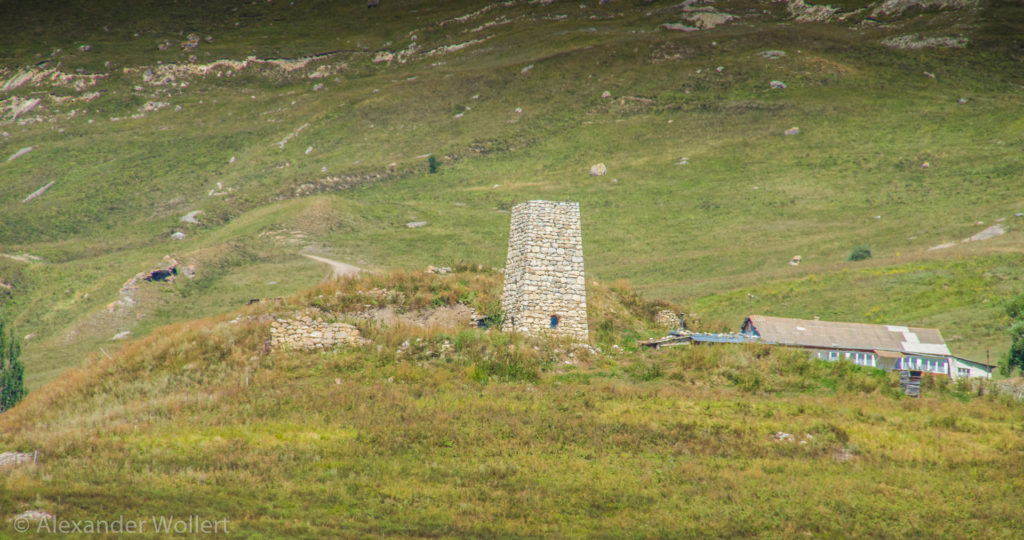

We reach a beautiful, open valley. A high defensive tower rises up on a slope. We can see a few of them in the mountains here from a distance. These are a very typical feature of the Caucasus. Whole villages were built from defensive towers. The inhabitants stack stones to form a square tower and add wooden floors on which different families and livestock live.
Here too, the principle applies: higher is always better. There are up to four floors. In the event of an attack, all families can retreat to their towers and shoot arrows from the top of the tower.
Perhaps it is a coincidence, but the inhabitants of the cold North Sea islands around Scotland also built similar defensive towers a long time ago.
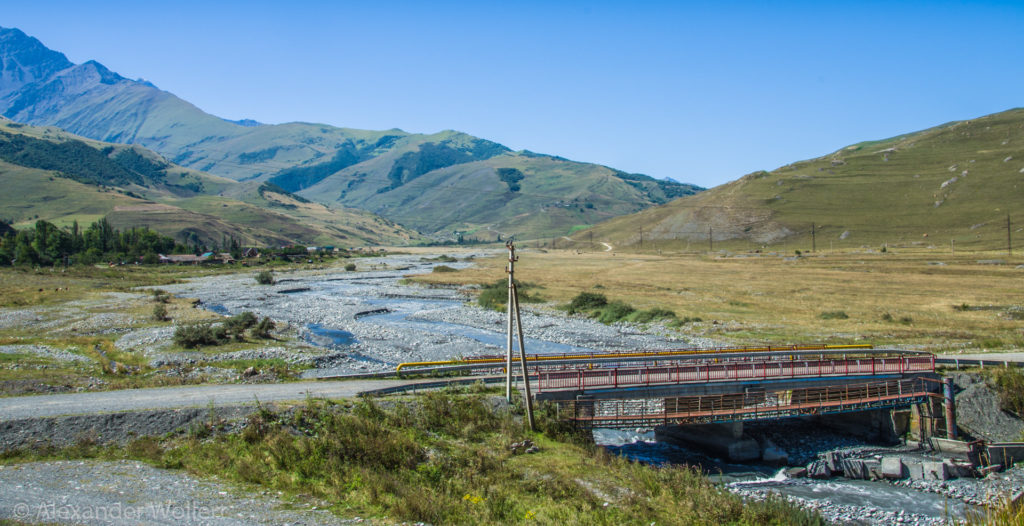

Alan turns into a valley in his big SUV and follows the gravel road to the end. At the foot of the mountain and on the edge of a mountain river we see a strange formation of stone houses with dark slate roofs that are too small to be inhabited. But they are.
A city of the dead!
There are openings at the front and back of each house through which we can see up close piles of the human bones of entire families. This was the necropolis “Dargav” of the ancient peoples of the Caucasus, the Alans and Ossetians. Aleksandra explains that the social status of a house can be seen from its location. The higher up the hill the graves are, the more important the families were.
The DargaV Necropolis
The necropolis in North Ossetia, known as Dargav, is a medieval necropolis. People in the region have been burying their dead in the houses of this town since the 14th century. In the 17th century, Dargav was used as a quarantine place for plague victims. The buildings in Dargav look like small residential houses and are believed to have been built over the centuries. There are many legends and stories surrounding this mysterious ghost town.
Natursteine
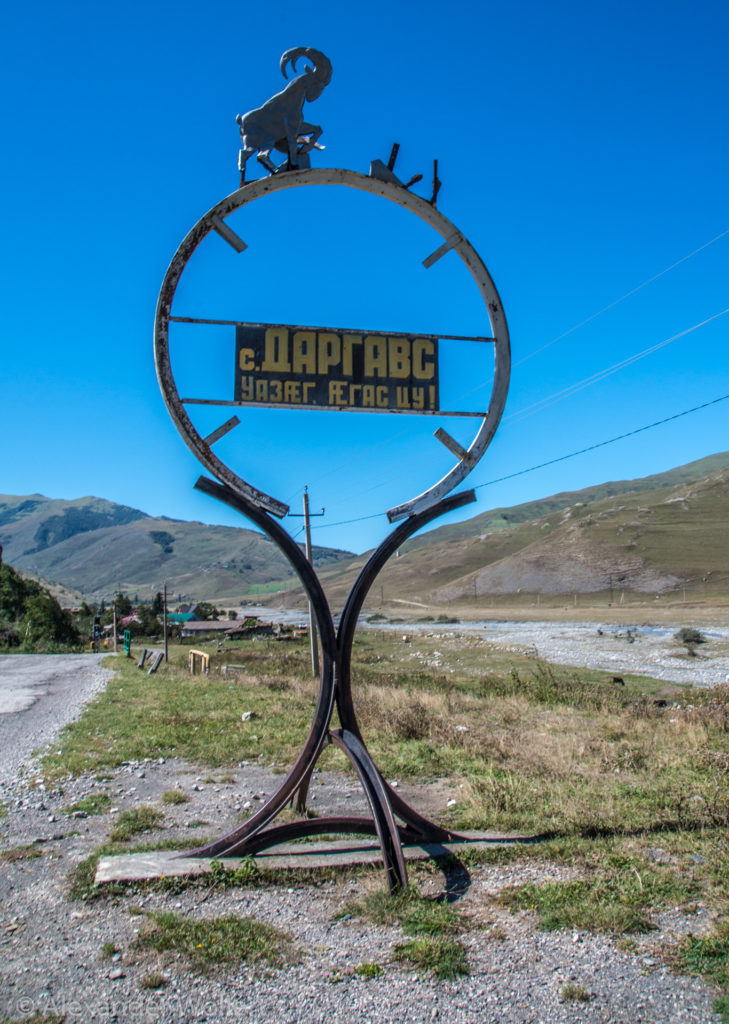



Wind constantly blows through the openings in the graves. This is why the bodies did not decompose but were mummified naturally.
However, there was not enough material to hold the bodies together, so what we see is mostly a collection of scattered bones rather than intact skeletons.






These dead had the best View in their eternity
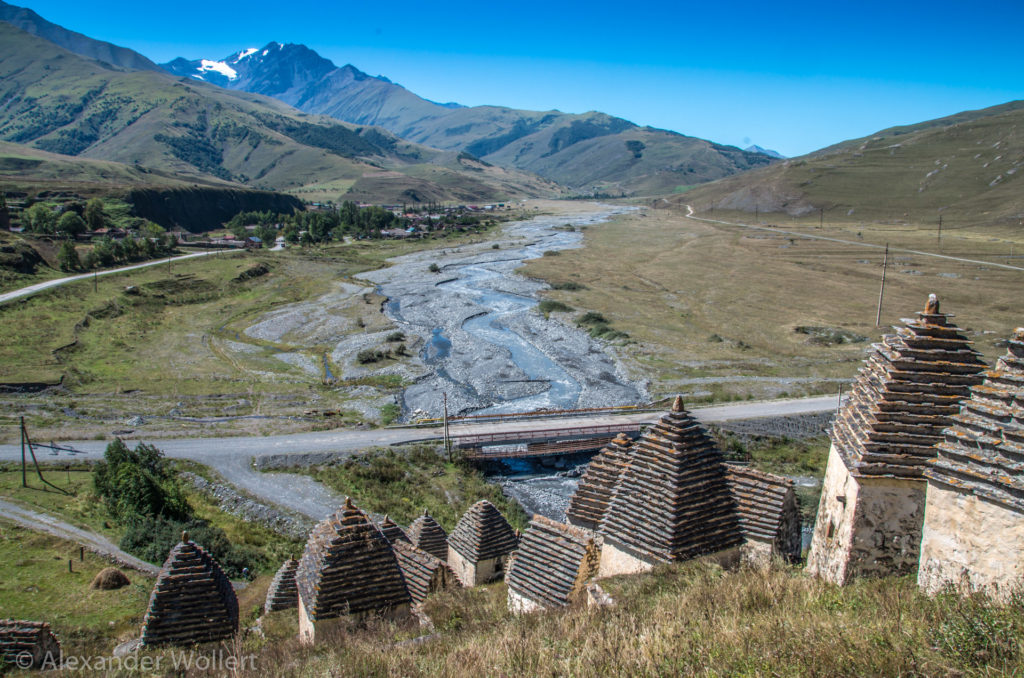



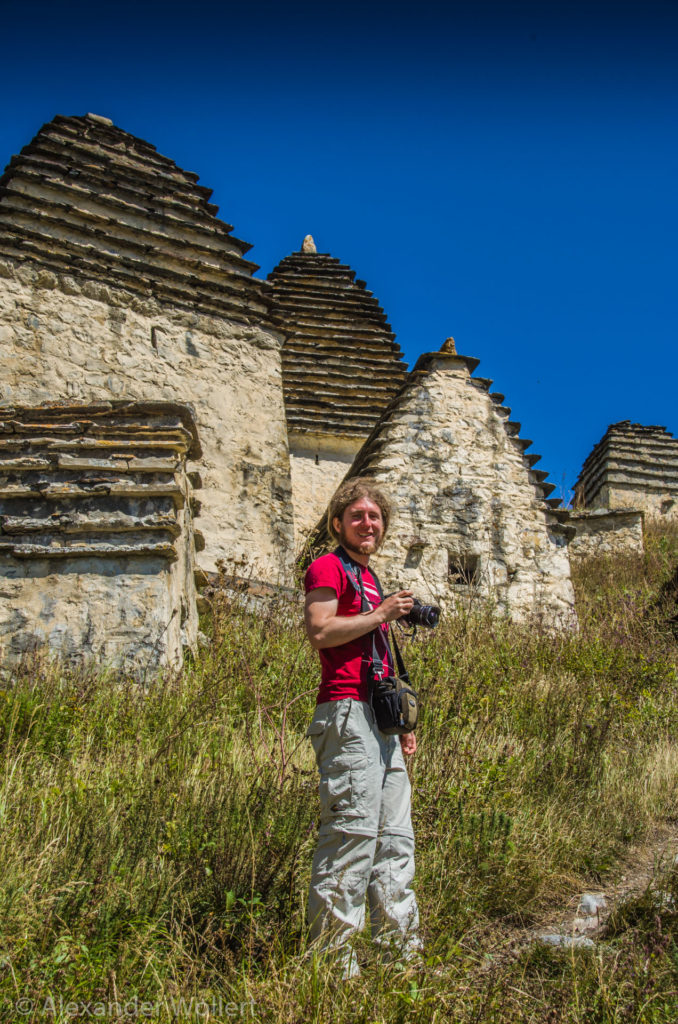

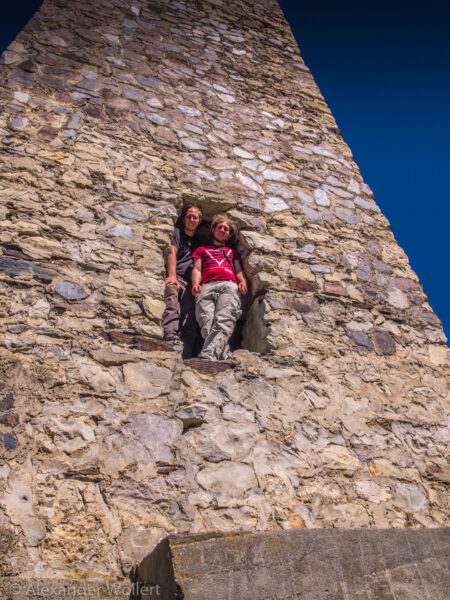

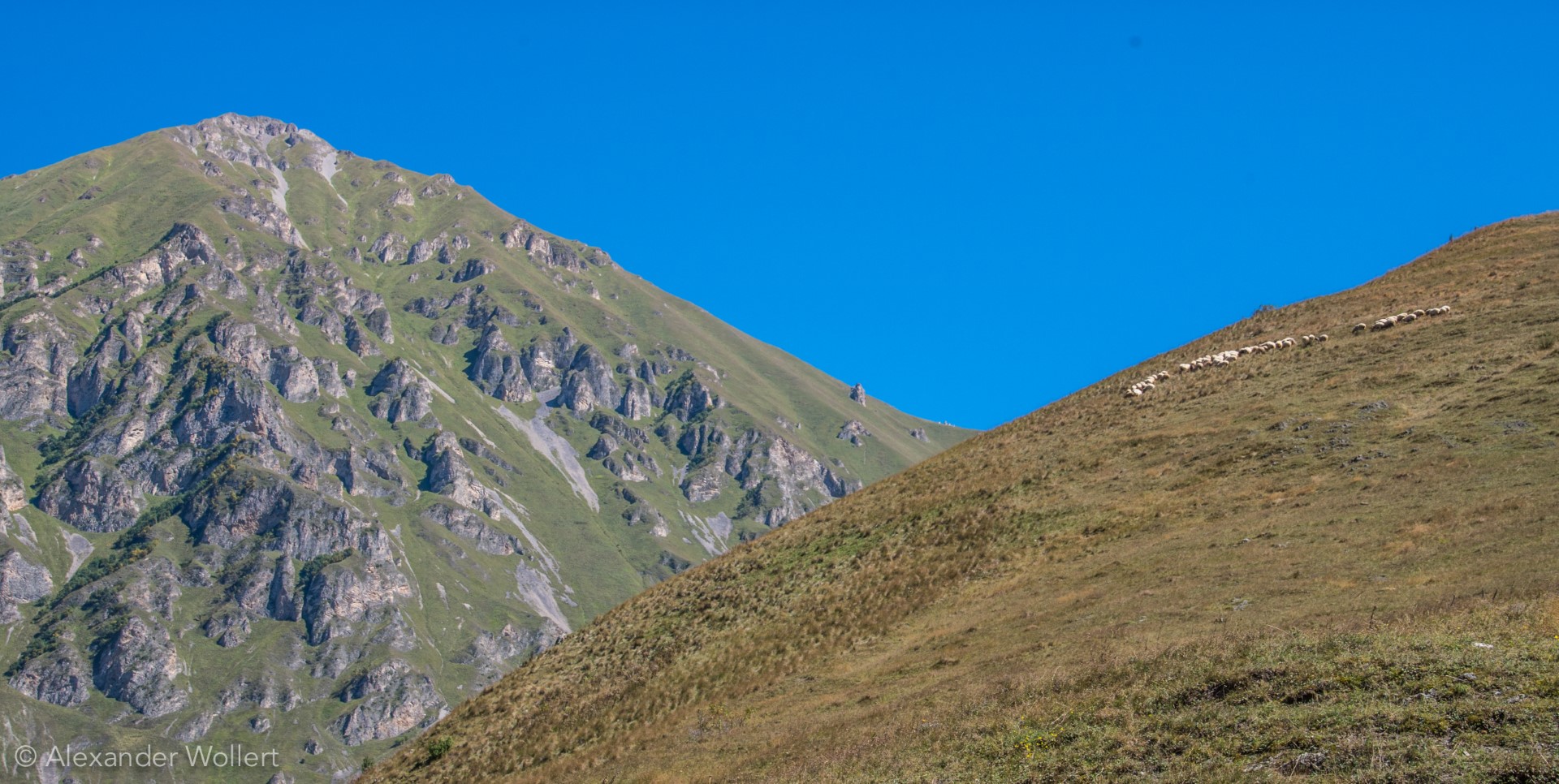
As we walk back to our car, a boy shakes my hand and greets me. Later, he shakes my hand again as I come out of a toilet, then goes to your father and tells him in Russian that I am his friend – Uli translates this for me. Very touching.
Alan comes up with the idea of driving to a beautiful waterfall. The only small problem is that it is across the border from Georgia… and our Russian hosts don’t have their Russian passports with them.
Alan tries his luck at the small border post anyway. He talks to his southern neighbors for a while, but they remain tough. Even though Russians can enter Georgia at will – which is not the case the other way around – they need a passport at least to do so.
We explore more of the Caucasus Mountains and begin our journey to Georgia.
